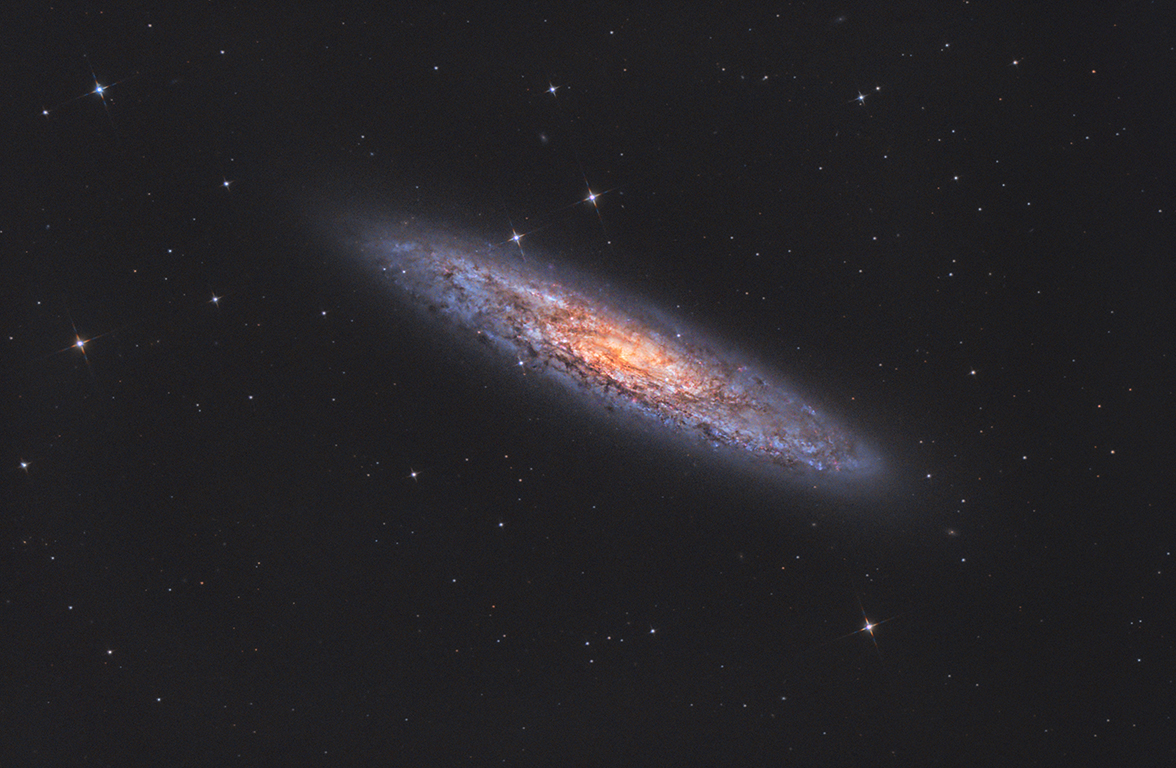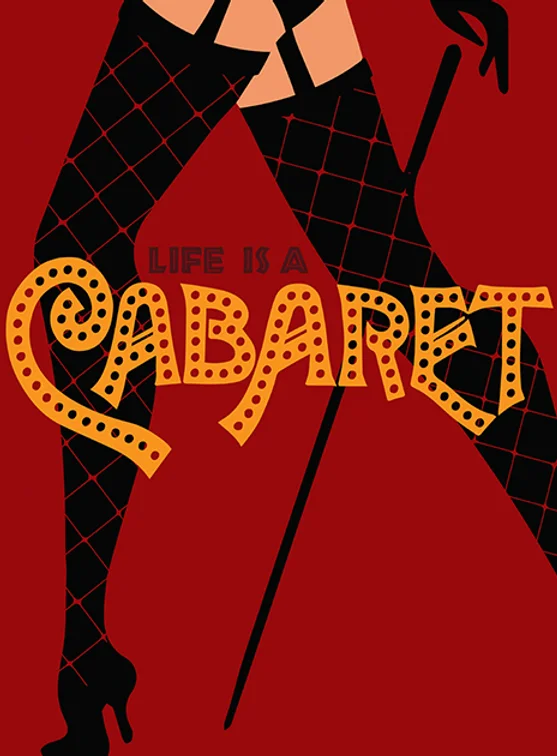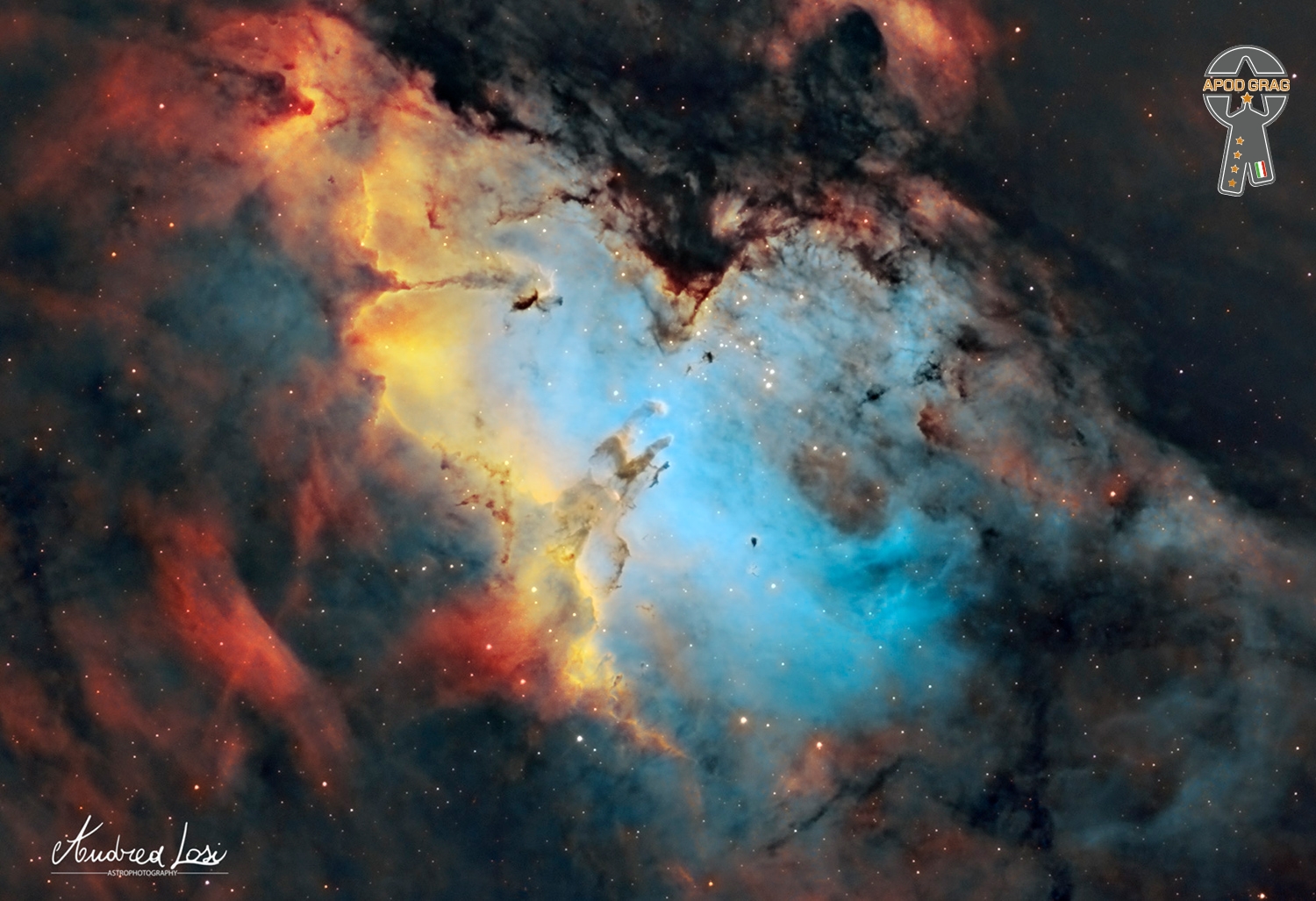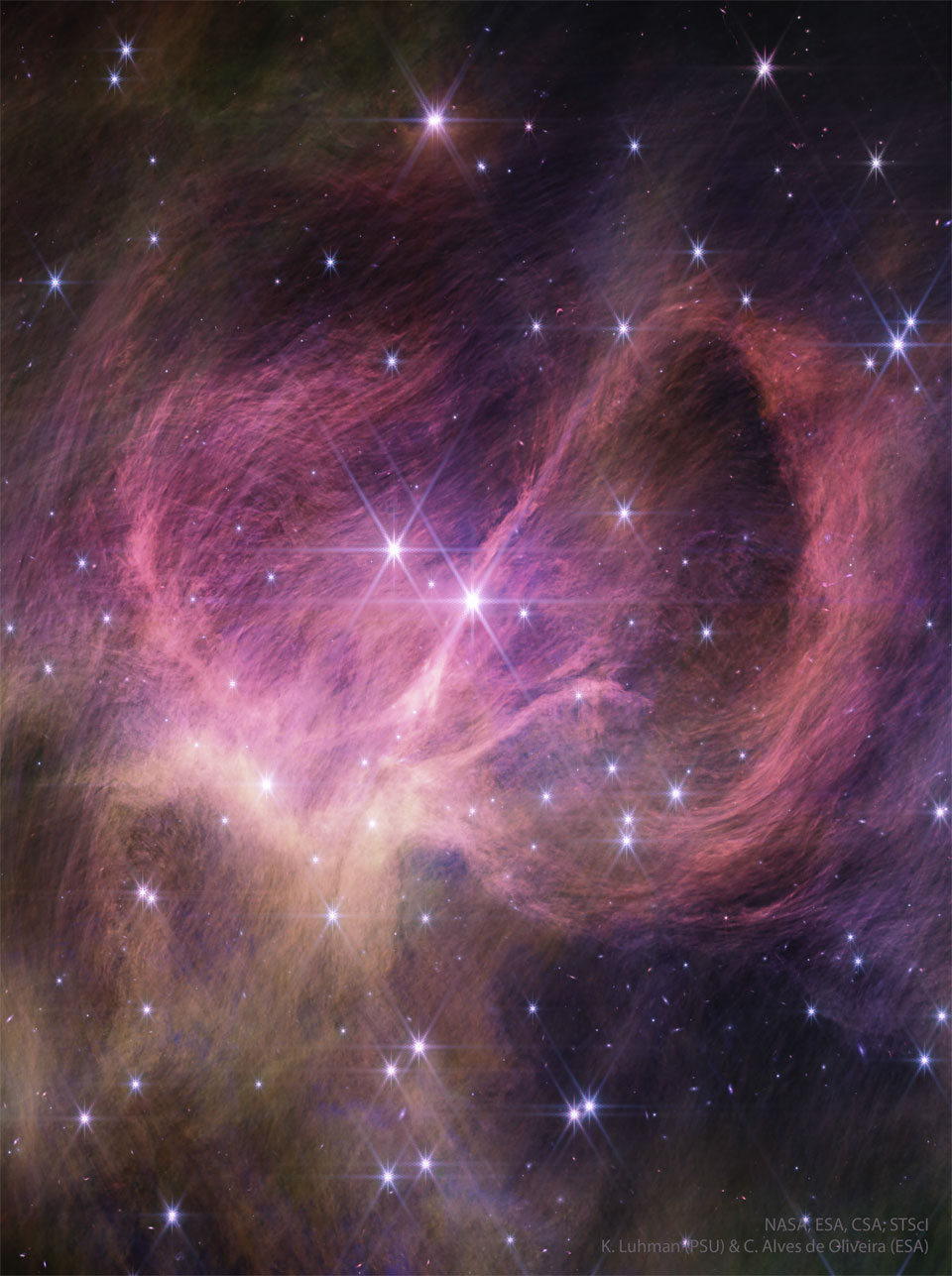Blog
Richard Pierce Havens (January 21, 1941 – April 22, 2013) was an American singer-songwriter and guitarist. His music encompassed elements of folk, soul (both of which he frequently covered), and rhythm and blues. He had a rhythmic guitar style (often in open tunings). He was the opening act at Woodstock, sang many jingles for television commercials, and was also the voice of the GeoSafari toys.
Born in Bedford–Stuyvesant, Brooklyn, New York City, New York, Havens was the oldest of nine children.He was of Native American (Blackfoot) descent on his father’s side and of the British West Indies on his mother’s. His grandfather was Blackfoot of the Montana/South Dakota area.
Havens’s grandfather and great-uncle joined Buffalo Bill’s Wild West Show, moved to New York City thereafter, and settled on the Shinnecock Reservation on Long Island. Havens’s grandfather married, then moved to Brooklyn. On April 22, 2013, Havens died of a heart attack at the age of 72.
more...The Sculptor Galaxy (also known as the Silver Coin, Silver Dollar Galaxy, NGC 253, or Caldwell 65) is an intermediate spiral galaxy in the constellation Sculptor. The Sculptor Galaxy is a starburst galaxy, which means that it is currently undergoing a period of intense star formation.

Jeff “Tain” Watts (born January 20, 1960) is a jazz drummer who has performed with Wynton Marsalis, Branford Marsalis, Betty Carter, Michael Brecker, Alice Coltrane, Ravi Coltrane, and others.
Watts got the nickname “Tain” from Kenny Kirkland when they were on tour in Florida and drove past a Chieftain gas station. He was given a Guggenheim fellowship in music composition in 2017. Watts attended Berklee College of Music, where he met collaborator Branford Marsalis.
more...Wilbur James “Jimmy” Cobb (January 20, 1929 – May 24, 2020) was an American jazz drummer. He was part of Miles Davis‘s First Great Sextet. At the time of his death, he had been the band’s last surviving member for nearly thirty years. He was awarded an NEA Jazz Masters Fellowship in 2009.
Cobb was born in Washington, D.C., on January 20, 1929. Before he began his music career, he listened to jazz albums and stayed awake into the late hours of the night to listen to Symphony Sidbroadcasting from New York City. Raised Catholic, he was also exposed to Church music.
more...Huddie William Ledbetter (January 20, 1888 – December 6, 1949 Mooringsport, LA), better known by the stage name Lead Belly, was an American folk and blues singer notable for his strong vocals, virtuosity on the twelve-string guitar, and the folk standards he introduced, including his renditions of “In the Pines“, “Goodnight, Irene“, “Midnight Special“, “Cotton Fields“, and “Boll Weevil“.
Lead Belly usually played a twelve-string guitar, but he also played the piano, mandolin, harmonica, violin, and windjammer. In some of his recordings, he sang while clapping his hands or stomping his foot.
Lead Belly’s songs covered a wide range of genres, including gospel music, blues, and folk music, as well as a number of topics, including women, liquor, prison life, racism, cowboys, work, sailors, cattle herding, and dancing. He also wrote songs about people in the news, such as Franklin D. Roosevelt, Adolf Hitler, Jean Harlow, Jack Johnson, the Scottsboro Boys and Howard Hughes. Lead Belly was posthumously inducted into the Rock and Roll Hall of Fame in 1988 and the Louisiana Music Hall of Fame in 2008.
Though many releases credit him as “Leadbelly”, he wrote his name as “Lead Belly”. This is the spelling on his tombstone and is used by the Lead Belly Foundation.
more...Cabaret musical opening at the Mixed Blood Theater Friday February 2nd 7pm by Theatre 55. Art returning to the West Bank. Music with Shirley Mier, Lyra Olson, Jeff Ruhnke, Brian Handeland, Bebe Keith and mick laBriola!

more...
Friday 19th 2024 6pm Erev Shabbat Service music with Inbal Sharret Singer, Jayson Rodovsky, Jeff Bailey, Pete Whitman and mick laBriola.
more...
The Eagle Nebula (catalogued as Messier 16 or M16, and as NGC 6611, and also known as the Star Queen Nebula) is a young open cluster of stars in the constellation Serpens, discovered by Jean-Philippe de Cheseaux in 1745–46. Both the “Eagle” and the “Star Queen” refer to visual impressions of the dark silhouette near the center of the nebula, an area made famous as the “Pillars of Creation” imaged by the Hubble Space Telescope. The nebula contains several active star-forming gas and dust regions, including the aforementioned Pillars of Creation. The Eagle Nebula lies in the Sagittarius Arm of the Milky Way.

Janis Lyn Joplin (January 19, 1943 – October 4, 1970 Port Arthur, TX) was an American singer and songwriter. One of the most successful and widely known rock performers of her era, she was noted for her powerful mezzo-soprano vocals and “electric” stage presence.
In 1967, Joplin rose to prominence following an appearance at Monterey Pop Festival, where she was the lead singer of the then little-known San Francisco psychedelic rock band Big Brother and the Holding Company. After releasing two albums with the band, she left Big Brother to continue as a solo artist with her own backing groups, first the Kozmic Blues Band and then the Full Tilt Boogie Band. She appeared at the 1969 Woodstock festival and on the Festival Express train tour. Five singles by Joplin reached the US Billboard Hot 100, including a cover of the Kris Kristofferson song “Me and Bobby McGee“, which posthumously reached number one in March 1971.[9] Her most popular songs include her cover versions of “Piece of My Heart“, “Cry Baby“, “Down on Me“, “Ball and Chain“, “Summertime“, and her original song “Mercedes Benz“, her final recording.
Joplin died of a heroin overdose in 1970, at the age of 27, after releasing three albums (two with Big Brother and the Holding Company and one solo album). A second solo album, Pearl, was released in January 1971, just over three months after her death. It reached number one on the Billboard charts. She was posthumously inducted into the Rock and Roll Hall of Fame in 1995. Rolling Stone ranked Joplin number 46 on its 2004 list of the 100 Greatest Artists of All Time and number 28 on its 2008 list of 100 Greatest Singers of All Time. NPR dubbed Joplin as “The Queen of Rock” and named her one of the 50 Great Voices. She remains one of the top-selling musicians in the United States, with Recording Industry Association of America certifications of 18.5 million albums sold.
more...Augustus Owsley Stanley III (January 19, 1935 – March 12, 2011) was an American-Australian audio engineer and clandestine chemist. He was a key figure in the San Francisco Bay Area hippie movementduring the 1960s and played a pivotal role in the decade’s counterculture. Under the professional name Bear, he was the sound engineer for the Grateful Dead, recording many of the band’s live performances. Stanley also developed the Grateful Dead’s Wall of Sound, one of the largest mobile sound reinforcement systems ever constructed. Stanley also helped Robert Thomas design the band’s trademark skull logo.
Called the Acid King by the media, Stanley was the first known private individual to manufacture mass quantities of LSD. By his own account, between 1965 and 1967, Stanley produced at least 500 grams of LSD, amounting to a little more than five million doses.
He died in a car accident in Australia (where he had taken citizenship in 1996) on March 12, 2011.
Stanley was the scion of a political family from Kentucky. His father was a government attorney. His paternal grandfather, Augustus Owsley Stanley, a member of the United States Senate after serving as Governor of Kentucky and in the U.S. House of Representatives, campaigned against Prohibition in the 1920s.
more...Horace Parlan (January 19, 1931 – February 23, 2017) was an American pianist and composer known for working in the hard bop and post-bop styles of jazz. In addition to his work as a bandleader Parlan was known for his contributions to the Charles Mingus recordings Mingus Ah Um and Blues & Roots. He was born in Pittsburgh, Pennsylvania, United States. In his birth year, Parlan was stricken with polio, resulting in the partial crippling of his right hand. The handicap contributed to his development of a particularly “pungent” left-hand chord voicing style, while comping with highly rhythmic phrases with the right. Between 1952 and 1957, he worked in Washington, D.C., with Sonny Stitt, then spent two years with Mingus’ Jazz Workshop. In 1973, Parlan moved to Copenhagen, Denmark. He later settled in the small village of Rude in southern Zealand. In 1974, he completed a State Department tour of Africa with Hal Singer.
more...IC 348 is a young star cluster that illuminates surrounding filamentary dust. The stringy and winding dust appears pink in this recently released infrared image from the Webb Space Telescope. In visible light, this dust reflects mostly blue light, giving the surrounding material the familiar blue hue of a reflection nebula. Besides bright stars, several cool objects have been located in IC 348, visible because they glow brighter in infrared light. These objects are hypothesized to be low mass brown dwarfs. Evidence for this includes the detection of an unidentified atmospheric chemical, likely a hydrocarbon, seen previously in the atmosphere of Saturn. These objects appear to have masses slightly greater than known planets, only a few times greater than Jupiter. Together, these indicate that this young star cluster contains something noteworthy — young planet-mass brown dwarfs that float free, not orbiting any other star. This image from the NIRCam (Near-Infrared Camera) instrument on the NASA/ESA/CSA James Webb Space Telescope shows the central portion of the star cluster IC 348. Astronomers combed the cluster in search of tiny, free-floating brown dwarfs: objects too small to be stars but larger than most planets. They found three brown dwarfs that are less than eight times the mass of Jupiter. The smallest weighs just three to four times as much as Jupiter, challenging theories for star formation. The wispy curtains filling the image are interstellar material reflecting the light from the cluster’s stars — what is known as a reflection nebula. The material also includes carbon-containing molecules known as polycyclic aromatic hydrocarbons, or PAHs. The bright star closest to the centre of the frame is actually a pair of type B stars in a binary system, the most massive stars in the cluster. Winds from these stars may help sculpt the large loop seen on the right side of the field of view. [Image description: Wispy hair-like filaments of pink-purple fill the middle of the image, curving left and right on either side of the centre. On the right, the filaments form a dramatic loop that seems to extend toward the viewer. At lower left are additional yellowish filaments. Two prominent, bright stars near the centre of the image show Webb’s eight-point diffraction spikes. Dozens of fainter stars are scattered across the image.]

more...
Steven Mark Grossman (January 18, 1951 – August 13, 2020) was an American jazz fusion and hard bopsaxophonist.
Grossman was Wayne Shorter‘s replacement in Miles Davis‘s jazz-fusion band. He played with Chick Corea on the album “The Sun” in 1970, then, from 1971 to 1973, he was in Elvin Jones‘s band.
In the late 1970s, he was part of the Stone Alliance trio with percussionist Don Alias and bassist Gene Perla. The group released four albums during this period, including one featuring Brazilian trumpeter Márcio Montarroyos. The albums also feature an array of other musicians. They went on to release three live reunion albums during the 2000s.
more...David Ruffin (born Davis Eli Ruffin; January 18, 1941 – June 1, 1991 Whynot, MS) was an American soul singer and musician most famous for his work as one of the lead singers of the Temptations (1964–1968) during the group’s “Classic Five” period as it was later known. Ruffin was the lead voice on such famous songs as “My Girl” and “Ain’t Too Proud to Beg.”
Known for his unique raspy and anguished tenor vocals, Ruffin was ranked as one of the 100 Greatest Singers of All Time by Rolling Stone magazine in 2008 and again in 2023. He was inducted into the Rock and Roll Hall of Fame in 1989 for his work with the Temptations. Fellow Motown recording artist Marvin Gaye once said admiringly of Ruffin that, “I heard [in his voice] a strength my own voice lacked.”
more...More Posts
- The Cosmos with NGC 7098
- Jeff Beck Day
- Lester Williams Day
- Terry Riley Day
- World Music with George Abdo
- Daily Roots with Damian Marley and Nas
- Geoffrey Oryema Ugandan musician Passes
- The Cosmos with IC 2631
- George Russell Day
- Milt Hinton Day
- World Music with Mustapha Tettey Addy
- Daily Roots with Turbulence
- The Cosmos with NGC 4565
- Kris Kristofferson Day
- Ray Mantilla Day
- Cal Green Day
- World Music with ESTRELLA MORENTE
- Daily Roots with Sizzla
- The Cosmos with NGC 5426/27
- Eric Reed Day